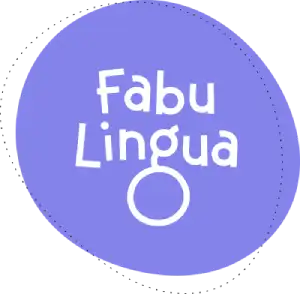In this post: We learn about the Silent Period of language acquisition and its importance in the language learning process.
Have you ever wondered how young children are able to acquire a language so easily?
It is widely understood that children are “sponges” when it comes to language learning, but how does this happen?
Research has shown that the part of our brain devoted to language acquisition is very capable of naturally acquiring a new language. However, this acquisition can only succeed if the language is presented in an ideal state.
In this ideal state, not only is the learner exposed to lots of Comprehensible Input and has a low Affective Filter, but their “Silent Period” is not broken.
In our previous blogs, we’ve talked a lot about Comprehensible Input and the Affective Filter, but what exactly is the Silent Period in language learning? What is this silent stage of language acquisition?
Understanding the Role of the Silent Period in Language Learning
In the language learning process, there are five known language acquisition stages: pre-production (the Silent Period), early production, speech emergence, intermediate proficiency, and advanced proficiency. Each of these stages of language acquisition are unique yet equally important in anyone’s language learning journey.
In the pre-production stage of language acquisition, learners do not create any output themselves, other than the occasional pointing or “yes” or “no”. It’s the stage at which learners don’t even try to speak. It can be very tempting to interpret this stage as shyness or intimidation. After all, we all empathize with the intimidating feeling of standing up and making mistakes out loud in front of classmates so early in a language learning journey.
There are linguistic researchers however, such as Stephen Krashen, that propose that this stage is not characterized by such staunch silence due to a stubborn failure to communicate or due to an abundance of nervousness. They propose that this early-stage silence is a biological necessity of the brain acquiring the competence before it is able to generate output.


In this natural first stage of language learning, the learner actively listens, and their brain undergoes the beginnings of a neural rewiring to enable them to start to processing this new language.
From the outside, it is hard to see any immediate progress at this stage, so it is often rushed or overlooked by those teaching the language.
Oftentimes, this stage is referred to as the Silent Period.


What is the Silent Period?
The Silent Period is the stage of language acquisition when a learner has started absorbing Comprehensible Input, but has not yet developed the ability to generate original speech.
While it is very common to push for language learners to speak the target language as soon as they begin learning it, it is best to encourage children to remain in this period of silence as long as they need to!
This term, Silent Period, was developed by linguist Stephen Krashen. (If you’ve read any of our blogs before, you’ve definitely heard his name!) In the field of second language acquisition, Stephen Krashen is a big deal. His theory of second language acquisition, including the Input Hypothesis and Affective Filter Hypothesis, have been foundational to how we view language learning and instruction today.
Krashen’s research on second language acquisition finds that the normal language acquisition process requires lots of Comprehensible Input at the beginning of the language learning process. During what he calls this Silent Period, neural connections are being built, but they are not yet developed sufficiently to be able to generate original output (speech or writing).

The Silent Period as part of the Natural Linguistic Sequence
Krashen believes that there is a natural linguistic sequence, that productive skills (speech, writing) evolve from receptive skills (listening, reading), and that you therefore need to focus on the receptive skills to eventually get to the productive skills, and that you must respect the Silent Period in order for those productive skills to eventually come online.

We understand this Silent Period intuitively in a toddler learning their first language – we understand this receptive period, and accept it takes time for them to learn the language before getting to the speech emergence stage (the stage of generating their own speech).
However, as a society we are somehow impatient and do not respect this Silent Period in children (or adults) who are learning a second language.
This Silent Period is present whether you are learning your native language as a toddler or a second language as a child or adult. There is an ESL Silent Period, and a Silent Period for learning any other second language. It is just an innate part of language learning.
The Affective Filter and The Silent Period in Language Acquisition
When we break a student’s silent period it is more likely that the student will develop a negative attitude towards language learning that will permanently raise their Affective Filter.
What is this ‘Affective Filter’ and why is it so important in language acquisition? The Affective Filter an ‘invisible psychological filter’ in the learner’s brain that blocks Comprehensible Input from reaching the language learning system of the brain. Stephen Krashen’s research has taught us that any amount of stress or anxiety in the learner’s mind will raise this Affective Filter and impede language acquisition.
It is therefore a central role of a language teacher to remove stress from the child’s language learning experience.
Nonetheless, because second languages are often taught as an academic subject, we demand output (speech) as ‘proof’ that our financial investment in this subject (foreign language learning) is working, proof that the teacher is ‘doing her job’. We don’t realize that this very requirement for proof, this requirement to generate original speech, is creating anxiety and is thereby sabotaging the language acquisition process by raising the Affective Filter.
(In the Silent Period stage, the proof we should be asking for from teachers shouldn’t be in the form of output generated by the learner, but proof of how much Comprehensible Input the learner has been exposed to, and proof that they have enjoyed it and not been stressed by it.)
To complicate matters in a classroom setting, different children have different lengths of Silent Periods. While one child may naturally move from input to production very quickly, another child will take a long time. The tendency of many educational institutions to move children along at the same pace will sabotage the language learning process for those children with a longer Silent Period.

Comprehensible Input and the Silent Period in Language Acquisition
The science on second language acquisition is clear – the single most important element in acquiring a second language is the amount of Comprehensible Input that the student is exposed to. (For more on Stephen Krashen’s Comprehensible Input Hypothesis read this post on our blog.)

There is a linear relationship in language learning that teachers need to always keep in mind:
The more Comprehensible Input a student is exposed to, the more language acquisition will happen.
This means that input-oriented activities will always produce much more language acquisition than output-oriented activities, especially for beginners who are still in their Silent Period.
So remember this as you structure your classes. Lean towards promoting input rather than output.
If you are a parent looking to structure your child’s experience at home around input, make sure you check out our blog ‘How to Teach your Kids Spanish at Home’.
The Silent Period is Good…it’s Golden! Do not force the generation of original output (speech)
As we have been discussing, Krashen tells us that from input to production there is a Silent Period when students do not produce any original statements, when no original speech is generated.
When we break a student’s Silent Period it is more likely that the student will develop a negative attitude towards language learning that will permanently raise their Affective Filter.
But what about output (speech) that is NOT original – that is simply copied or mimicked?

Does encouraging mimicry also disrupt the silent period?
Producing mimicked output is less intimidating and stressful than generating original speech, and therefore is less likely to raise the Affective Filter. Children, in particular, are uniquely capable of mimicry compared to adults, they typically find it easy, not stressful and usually fun. You see it in the playground all the time, kids playing some version of ‘Copy Cat’ for their own entertainment.
In fact, it is because of children’s unique capacity for mimicry that cultures develop accents and specific speech cadences – children naturally mimic the speech patterns of their parents and elders. It is of existential importance that they be able to do so very accurately, so they are perceived to be part of that society, and therefore more likely to be protected.
The judicious use of mimicry can improve pronunciation of a second language just as it does with a native language. And it can do so without disrupting the Silent Period. If done right – if a child is enticed into regular mimicry with a game, in a way that is not stressful, but full of fun and giggles, with no classmates or teachers waiting to judge them or laugh at them – then this can be a very beneficial step in the acquisition of a second language.
Improving Pronunciation During the Silent Period in Language Acquisition
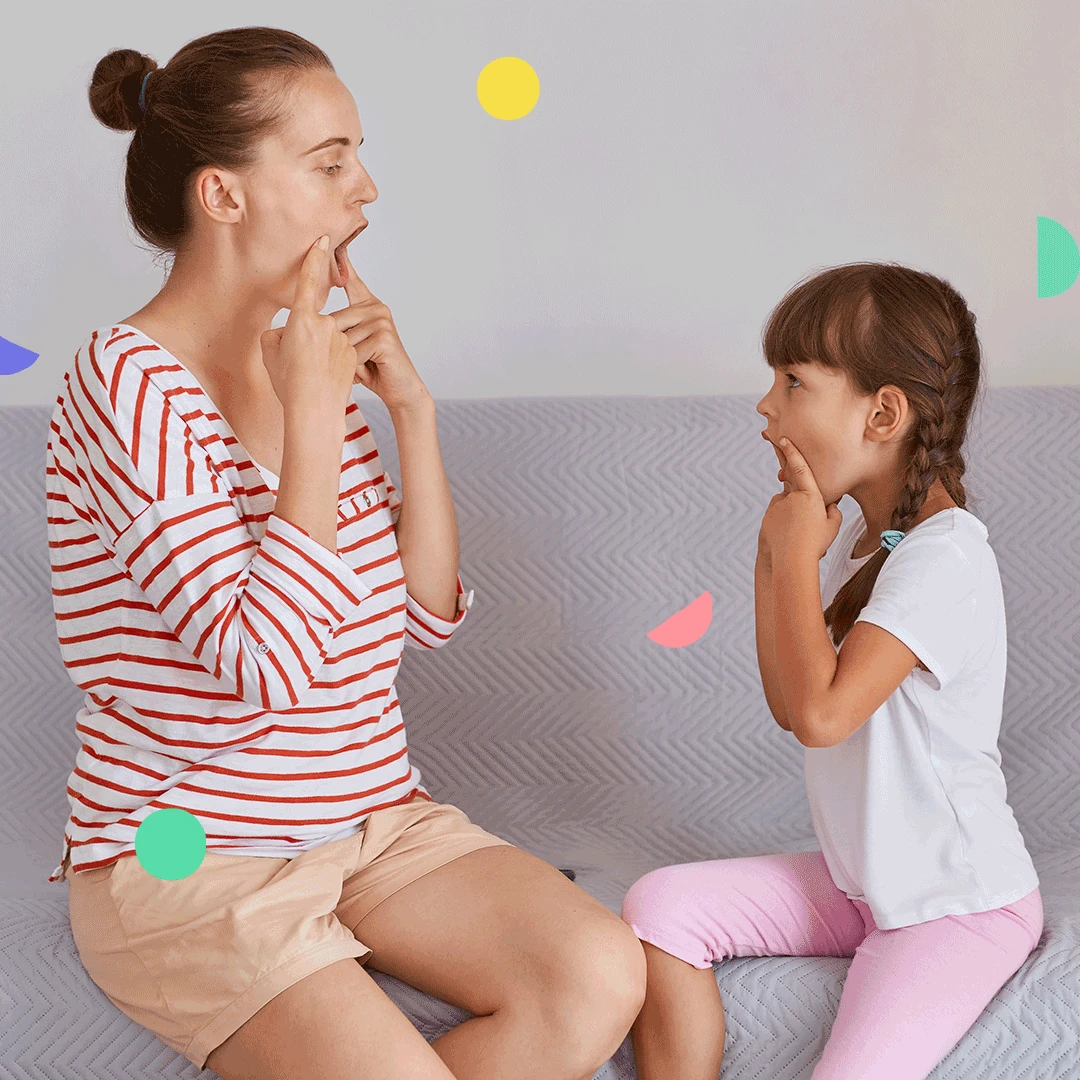
Language learning requires you to learn new sounds and a new way of speaking, what we formally call ‘phonetics’ and pronunciation. This is hard and takes a lot of practice, because the muscles in our mouth and tongue have to do a lot of ‘reps’ to adapt into subtly different shapes to make totally new sounds (you’ve probably heard a native English speaker unsuccessfully attempt to roll their Rs in when learning Spanish). We also have to learn to read words differently, to understand that those same letters make very different sounds.
If we are able to regularly workout the muscles in our mouth and tongue in this new way – while not interrupting the Silent Period with demands for original output (speech) – then we can improve pronunciation alongside the natural language learning process without disrupting it.
This is why part of FabuLingua’s patented method of language learning involves a ‘CopyCat’ mode for each story. After the children have enjoyed a story in the Magical Translations mode (where they are exposed to lots of Comprehensible Input), they then do CopyCat mode (click here to learn more about all these modes).
Most children find this the most fun mode in FabuLingua. They love recording themselves as they imitate the native narrator, and are thrilled by the strangeness of hearing their own voices being played back alongside the narrator! Parents often hear peels of laughter while kids do CopyCat!
But in and amongst the laughter, unbeknownst to the child, CopyCat is helping them develop a native-like pronunciation.
To be clear, a native-like accent in a second language is not at all essential to speak that language fluently. There are plenty of fluent speakers in the world with strong foreign accents. (FabuLingua’s founder, Leslie Omaña Begert, had a mother who was completely fluent in English but had a Norwegian accent when she spoke). However, having a native-like accent will increase the child’s self-confidence and attitude toward language learning, which will in turn lower their Affective Filter.
A very talented teacher or parent may surely be able to reproduce this CopyCat mode, but in the event of doing so, please note that this is not the same as ‘call and response’ type of schooling one may imagine in some 19th century schoolhouse. That would be utterly boring, and boredom, as we now know, is a big trigger for the Affective Filter to go up and sabotage language learning. If a teacher or parent were to replicate this mode, a very fun game must be made out of this activity! 🥳 🎉
Children are natural-born imitators, and using their amazing capacity and desire to imitate will generate a native-like accent that they will be proud of.

What about gently scaffolded output where they’re not generating their own speech?
When a new language learner struggles with generating original output, the real issue is not with the production of sounds per se, but rather the creation of original content for the output.

This is because the cognitive burden of coming up with original speech is very high. It will interrupt the language acquisition process if initiated too soon.
Practicing sounds and words out loud without the burden of generating original content is fine. That is just working the muscles of the tongue and mouth, and it does not place the kind of cognitive burden that interferes with language acquisition. So, don’t insist on a child generating original output (speech) before their Silent Period is over! But lean into fun mimicry games to work on pronunciation in a way that will not disrupt their Silent Period.
When Does the Silent Period transition to the Speech Emergence/Generation Stage?
How long does the Silent Period last? Experts say it can be between 2 weeks and 6 months. It varies across individuals, and it depends on how much Comprehensible Input they are exposed to and how consistent that exposure is. Are they exposed to it consistently on a daily basis? In an ad hoc manner that averages out to once a week exposure? All these impact the length of the Silent Period. At FabuLingua we have found that the longer you wait to request the output, the more naturally and spontaneously speech generation will actually happen.
How does the Silent Period affect vocabulary development? We’ve also found that it affects vocabulary development in much the same way as all other aspects of language learning. So long as the learner is being exposed to lots of Comprehensible Input in a low anxiety environment that is engaging, the vocabulary is being built up during this active Silent Period (even with no drills and tests to prove it! 😉). Typically, by the end of their Silent Period, learners may understand 500 words.
A spontaneous transition from the Silent Period to the Speech Generation stage? Really?
We hear it all the time from parents who’ve been using FabuLingua for a couple years. The only thing these parents do is make sure that FabuLingua is always available for their kids to use a lot and frequently. Outside of that, they make no requests. They just allow the child to go at their pace, listen to the stories, play the games.
And suddenly one day their kids are speaking. Speaking with perfect, little native-like accents. With no fear or anxiety. Just blurting things out to Spanish speakers they encounter.
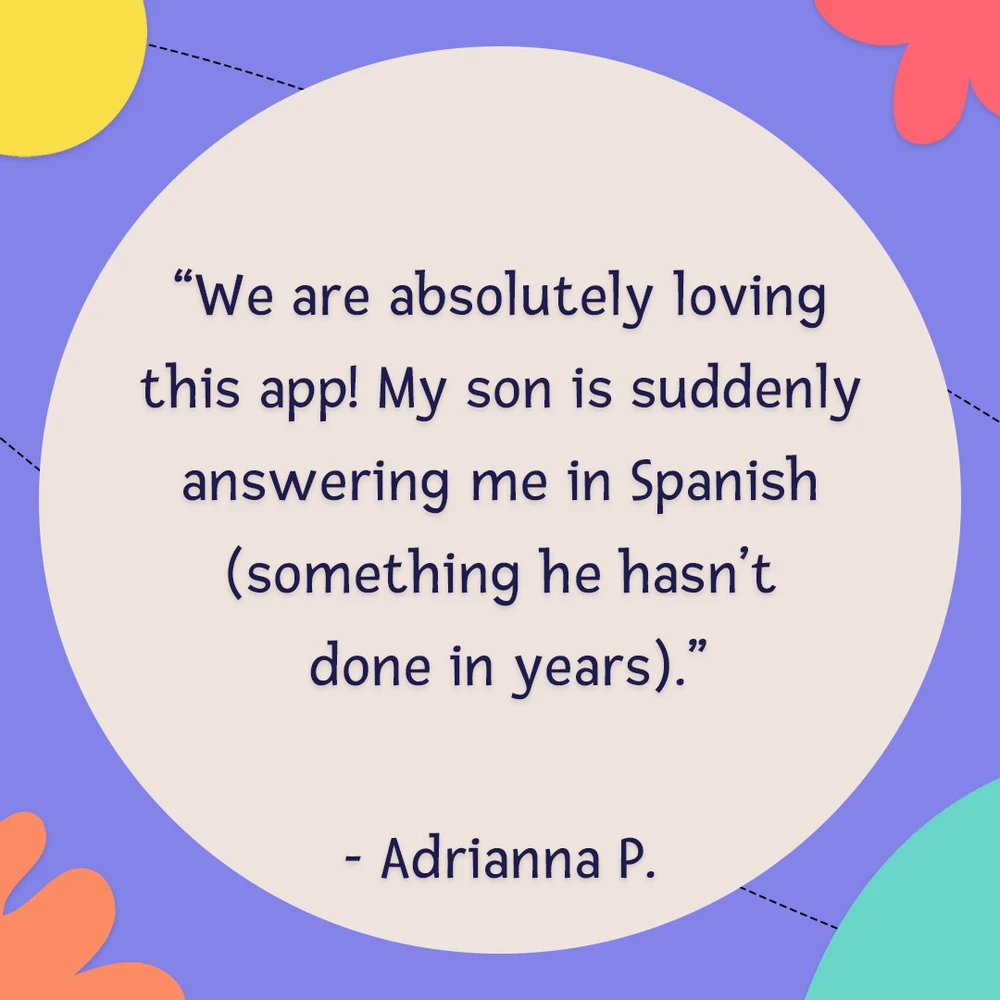
“When your 6 year old talks to you in Spanish and you have no idea what they’re saying…
Silas says “Te quiero” while I’m making coffee….
I didn’t reply. (Didn’t know what he was saying or that he was talking to me).
He said “MAMA TE QUIERO!”
“What does that mean” I ask…
“I love you” he replied.
Then my heart started melting and was very happy that his lessons are working.
“I love you, too!”
– Jaimie R
“…got [FabuLingua] for my kiddos. We speak Spanish at home but they are receptive bilinguals and this is the first time they are actually loving speaking Spanish! “
– Kelly A
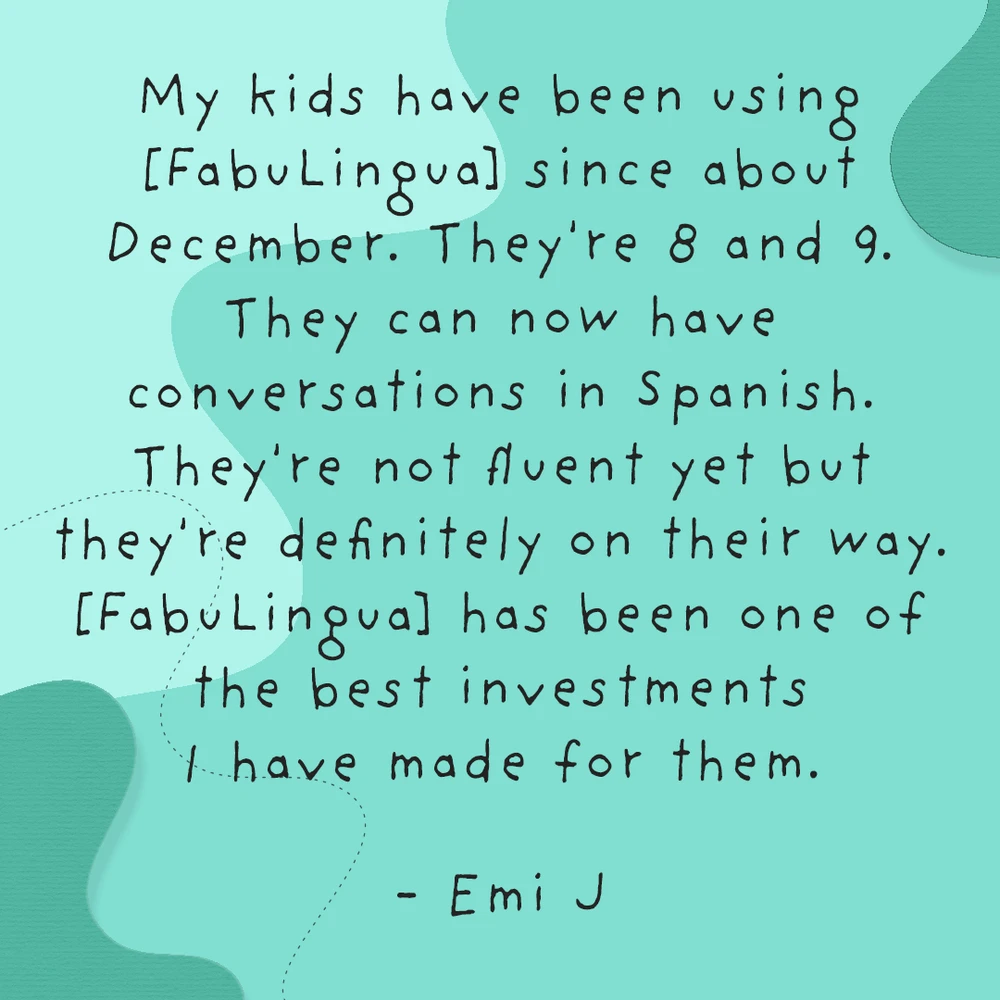
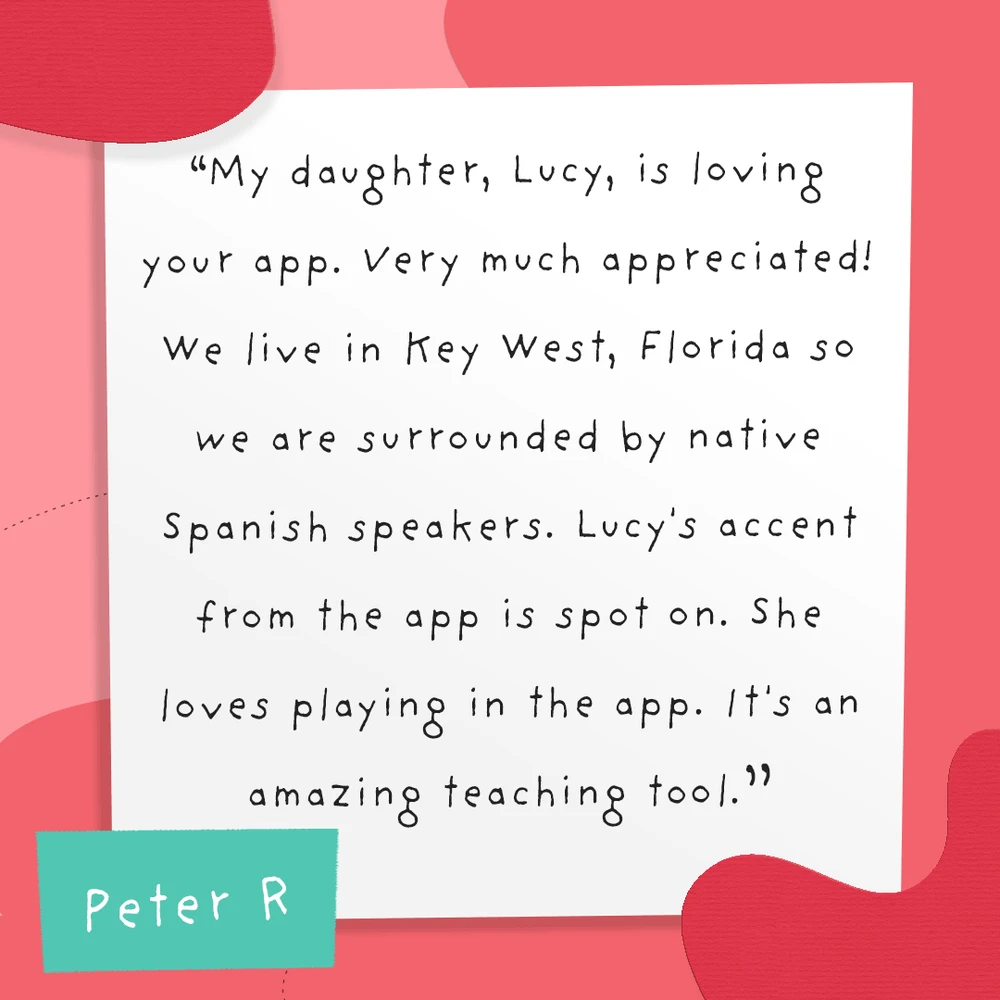
“DS absolutely adores the Hugo story and illustrations. He is now hooked on FabuLingua and wants to use it daily! Update: Wanted you to know that DS was speaking to me in Spanish this morning. It was perfect as far as I can tell. And he has never done that ever before.”
– Leigh S.
It’s amazing that an input-based teaching approach, one that does not require the generation of original speech or writing, goes on to produce such spontaneous speech capbilities. It all goes to show that the workings of the Silent Period really are as the researchers like Krashen have described!
Just give the brain plenty of the right kind of input with no stress, and it will learn the language – just like nature designed it to do!
Once you have seen that your student or child gets to this stage, once they start spontaneously speaking to Spanish speakers in Spanish, you know that you’re clearly nearing the end of that child’s Silent Period. Then, you can start gently enticing them to generate output.
But be kind, and don’t rush them in too quickly or too dramatically. For the rest of their language learning journey, always tune into their Affective Filter, so that you keep their emotions around language learning positive! That is how you will create the most effective language learning experience.
Respect a Child’s Silent Period with FabuLingua
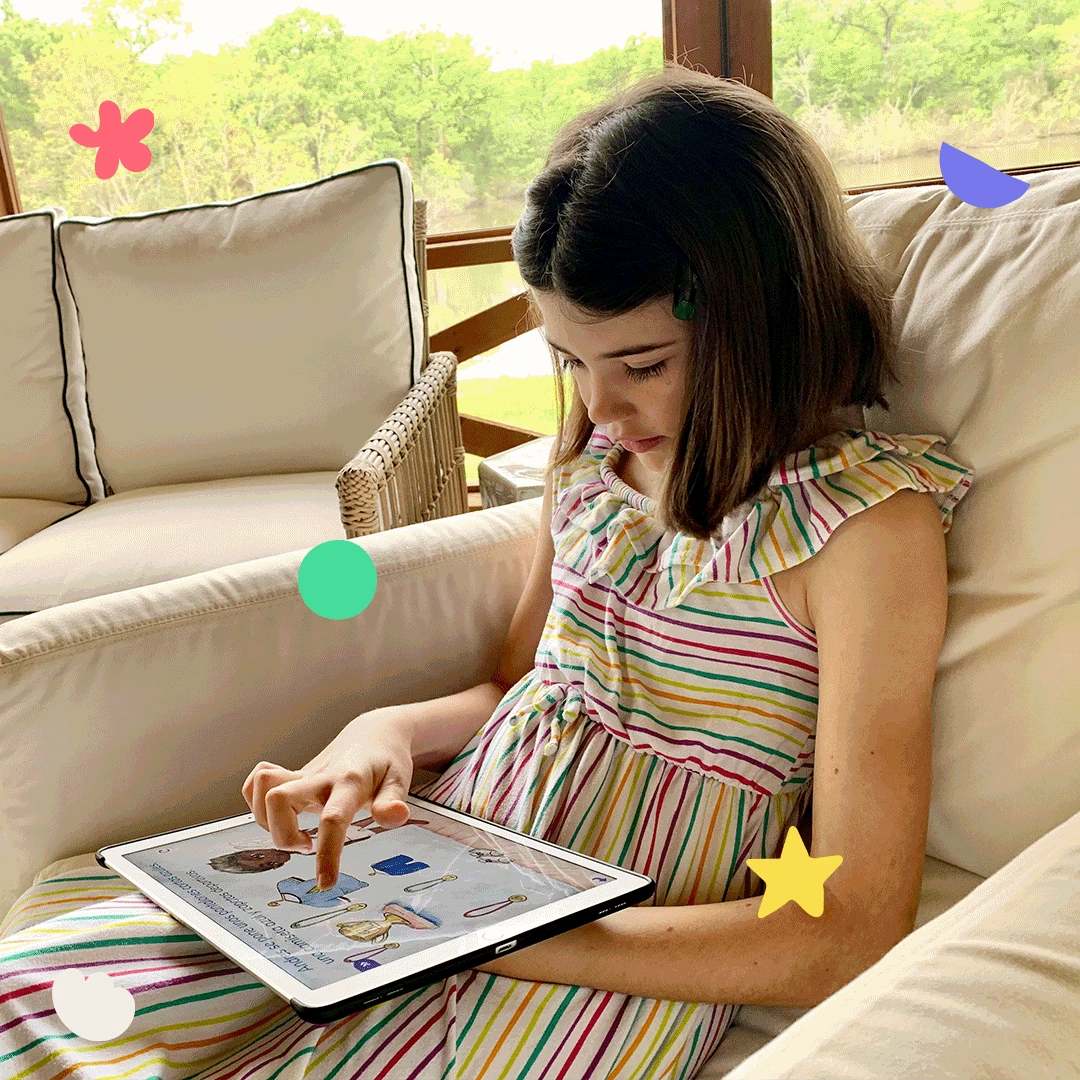
FabuLingua is a digital platform that has been designed with a deep appreciation of a child’s Silent Period and its enormous influence on second language acquisition.
FabuLingua is based on the extensive and well-established science of second language acquisition – none of the platform requires the child to generate original output.
We move the child along in their pronunciation, their comprehension and even spelling, whilst playing compelling games that do not demand the generation of original output (speech or writing). And as we do that we gently fine tune the underlying skills that will be essential when that output is eventually generated (pronunciation for speech, spelling for writing).
By not disturbing the child’s Silent Period, and by exposing a child to vast amounts of Comprehensible Input, whilst ensuring the Affective Filter is low, we allow the child’s brain to naturally wire itself to the new language.
We feel it’s only a teacher or parent (who is in tune with the child) that can be the judge of when a child’s Silent Period is over. When that time comes they can use the FabuLingua stories as a basis from which to generate original output.
We will soon have a teacher platform that has supplemental resources for teachers – some of which do require the generation of original output – that can expand output skills for those children who are ready for it.
Allow Children to Experience a Low Affective Filter, Tons of Comprehensible Input and the Silent Period They Need to Learn a new Language
The traditional school language-learning experience often requires children to generate original output way before their Silent Period is over, and the system has shown itself to be uniquely ineffective.
You’ve heard the statistic that only 1% of kids who study a language in schools in the U.S. go on to become proficient in that language. 🤯
Instead of questioning whether the old teaching model requiring the immediate generation of original output actually works for language learning, we’ve just accepted these poor outcomes as being part of the territory for language learning.
We would never accept such a poor teaching method in any other subject.
FabuLingua was developed to support teachers and parents who choose to move past old, ineffective teaching methods and want to teach their kids and students the contemporary and effective way. In a way that is based on language learning science. A way that provides plentiful compelling Comprehensible Input while lowering the Affective Filter and respecting the Silent Period – so that language acquisition can occur naturally and very effectively.
FabuLingua has been created to support parents and teachers in reviving the art of teaching a language the natural way – the way our brains were innately designed to learn. Our language acquisition app provides schools and families anxiety-free, fun, compelling and interactive digital learning that respects a child’s Silent Period whilst making sure that lots of learning is happening under the hood!
Ready to respect a child’s Silent Period and make language learning fun but super effective?
Get the FabuLingua app today in the AppStore or Google Play store and receive 30 days FREE!

FabuLingua sets the stage perfectly for natural Language Acquisition
FabuLingua provides compelling Comprehensible Input through interactive, lightly animated stories that are set in an immersive mobile game. FabuLingua will have children subconsciously absorbing and acquiring the language from the outset.
This is not only the easiest way for children to learn Spanish, but it’s the most effective way!
Our illustrated children’s stories use our patented Magical Translations® methodology to create a lot of Comprehensible Input that is compelling to children, so they acquire Spanish effortlessly and in a relaxed and engaging way.
Each element is designed to entrance kids, delight them, excite them and motivate them so that their Affective Filter is lowered so much that it disappears! Add vast amounts of Comprehensible Input and no requirement for original speech or original writing you now have the perfect set up so they can learn Spanish effortlessly, subconsciously, without realizing that they’re doing so!
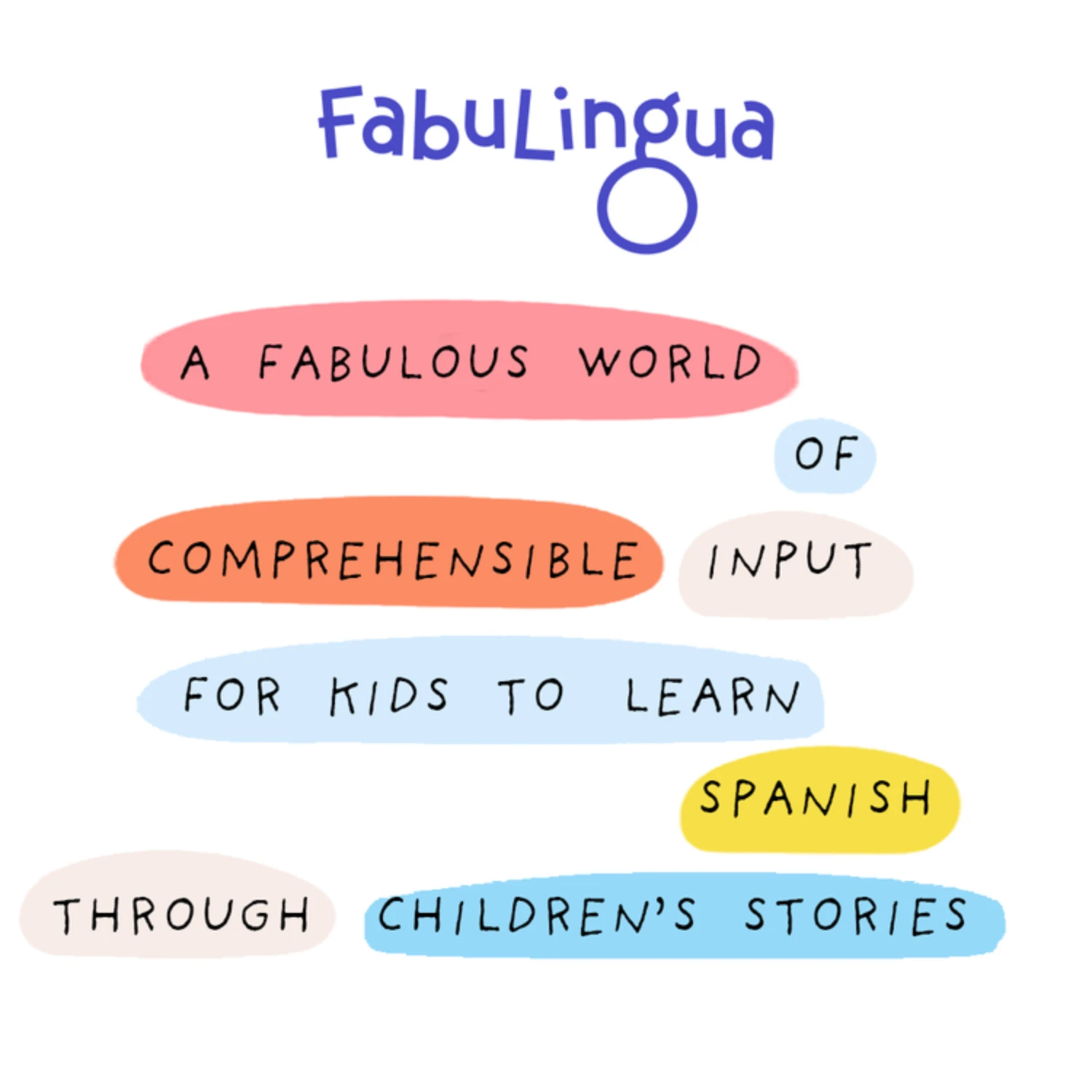
Get the FabuLingua app today in the AppStore or Google Play store and receive 7 days FREE!
